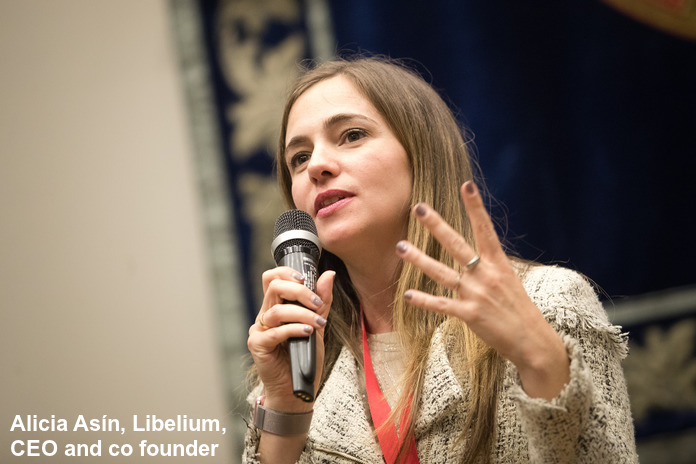New technologies such as IoT, AI, Big Data and Blockchain are transforming the world. Everything is becoming intelligent: homes, businesses, schools, cities. And everyone wants to improve the competitiveness of their business by investing in IoT technology.
IoT projects require planning and do not always achieve success due to problems that may arise during implementation. IoT projects can fail due to expansion of deadlines, poor quality or usefulness of the data collected, lack of internal experience in companies, integration complications or budget limitations. These are some of the most frequent barriers. What should we do? What should we focus on to improve it?
I want to present this decalogue of advice based on Libelium’s experience in collaboration of the key-players of the IoT market that helped us to identify the main challenges facing the IoT to ensure its growth and success.
1. The IoT is cool but it has to be profitable
It is important to set an objective that pursues a clear return on investment, either in terms of cost savings or productivity improvements. Basically, the most profitable ROI is the one that accelerates innovation in the company, reduces time of commercialization of the products in the market or that reduces the cost of supply and development.
2. The priority must be to generate value for the customer and for the end user
To do this, it is a good idea to define the project focusing on the end user of the data, the person who will make the decisions based on this, and align expectations having the user at the center of the project.
3. Act in the short term without losing sight of the time horizon
At the first stage of the project, it is a priority to define objectives and basic successes but it is also interesting to foresee additional functionalities with the customer. In order to do this, it is necessary to maintain a flexible attitude during all phases of the project adding new objectives and applications during the process. In short, do not lose sight of the global perspective of the project in any of its phases.
4. Think small to achieve big transformation
In any company of any productive sector, even the simplest processes can be automated and generate value from the data they bring to the product chain. For this reason, projects and ideas do not have to start with the management committee of the company but can go upwards. In this way, short-term gains can be prioritized while keeping an eye on the goal of complete digital transformation, which is a long-term result.
5. Identify the useful data
Do not install sensors everywhere if you do not know what to do with the data afterwards. It is necessary to think about the added value that this data will provide, integration with other existing data sources and subsequent analysis for decision making. In conclusion, the data has to be able to predict and prevent or to act accordingly but not to confirm bias.
6. Data as a new source of income
We can even think of the data as a new source of profit for companies, such as the exploitation of consumer behavior in the case of cars or connected electrical appliances to generate new services for the customer.
7. Plan projects realistically
Nothing goes well at the first stage without prior planning, you must establish different phases and contemplate all the difficulties that may arise at each stage: installation, maintenance, data transmission, application development, etc. For this reason, it is very useful to test the technology on a small scale before and discover the difficulties that may arise later.
8. Time and money are enemies to watch: greater price transparency
You have to take into account time and budget constraints for any project prioritizing IoT applications that create value. It is better to plan rapid developments that allow them to be reviewed continuously. This allows improvements to be made in each revision phase rather than waiting for a large deployment without first having tested the technology.
In addition, it is important to demand greater price transparency in order to define precisely what the amount of the investment will be in the medium term. In order to do this, cloud platforms must model their rates in order to have a clear understanding of the costs of their services.
9. The importance of being surrounded of specialists
Establish a network of partners and share knowledge with all players of the project to achieve a successful outcome. It is convenient to avoid the IoT gurus who know everything. It is best to look for real experts in every part of the value chain, from hardware devices to data intelligence. This requires engineers who have specific knowledge, even if it means redefining the workforce and jobs.
In order to achieve this, it is necessary to bet on continuous training within organizations in order to have real professionals in IoT solutions architecture. They must be up to date with the technology offered by the market, the different hardware and software solutions, protocols, platforms and know how to provide projects with the necessary value to decide which are the most appropriate in each case.
10. Seek scalable, secure technology that does not limit future integrations
Bet on open-source technology for its flexibility, security, future perspective, ecosystem wealth and more favorable costs. Of course, identifying the most suitable technologies and IoT platforms for the project. In order to do this, it is important to answer questions such as what you want to do with the devices or how and where you want to store the data and process the information, among other questions.
10+1. Innovate or die
In all organizations there are proactive and agile people who enjoy the changes and grumblers who live clinging to the past. It is important to be prepared to fight against those who are resistant to change. It always helps to establish a continuous learning culture and flexibility to adapt to change in the organization. Those who take advantage of change and opportunities become more productive and efficient and add value to the company.










